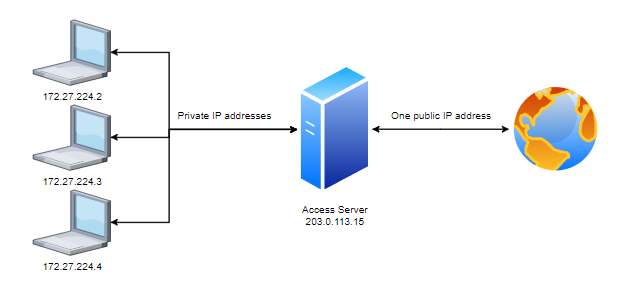Routing and Network Address Translation
This section details the difference between Access Server's routing and NAT functionality.
Default NAT for routing
By default, Access Server grants access to private subnets using network address translation (NAT), which maps multiple private addresses inside a local network to a public IP address.

NAT grants VPN clients access to private subnets. Access Server transforms each client's virtual address via NAT. This means that Access Server's host IP address is used as the source address on client packets destined for private subnets.
Advanced routing
Access Server's routing feature requires more advanced configurations. When you enable routing, you have an additional configuration option to allow access from specified subnets to all VPN client IP addresses and subnets. Routing also requires a routing table configuration on your server.
Here are some example routing setups: